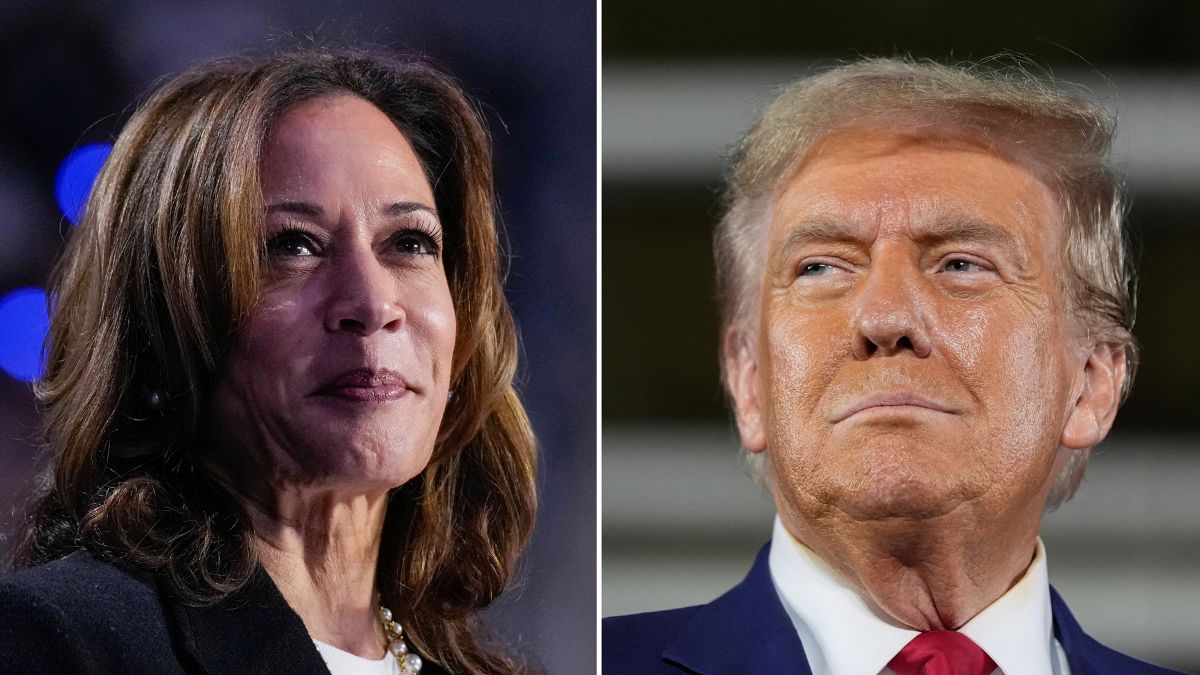Indian-Americans, long celebrated for their economic success, now stand poised to play a decisive role in the presidential election as both major parties court their crucial votes
read more
)
Vice President and Democratic candidate Kamala Harris (left), Former President and Republican candidate Donald Trump (right). AP
Millions of Indians have migrated to the United States over the decades, achieving notable success, particularly in fields like business and technology. Indian-Americans have long been considered a “model minority” due to their high educational attainment, economic prosperity and substantial presence in sectors driving US innovation. This election season, however, their status has evolved as they’re now seen as a vital voting bloc with potential to sway the presidential outcome.
Indian-Americans in Fairfax
In Fairfax County, Virginia, a prosperous area within the Greater Washington, DC region, Indian-Americans comprise nearly 3 per cent of the population. With more than 32,000 residents of Indian origin, Fairfax has one of the highest concentrations of Indian-Americans in the area. Known for high homeownership and entrepreneurial rates, they often surpass other immigrant groups and even native-born Americans in wealth and educational achievements, showcasing their community’s notable impact on the local economy.
A growing political force across the nation
Across the US, approximately 5.2 million Indian-Americans, including first-generation immigrants and their descendants, contribute to the nation’s economy and culture. About half of them—2.6 million—are eligible voters and their votes are increasingly coveted by both major parties. The efforts to engage these voters have intensified, with both President Donald Trump and Vice President Kamala Harris making targeted appeals to win their support.
Diwali diplomacy
In a bid to capture Indian-American votes, both Trump and Harris recently acknowledged Diwali, the Hindu festival of lights. Trump’s Diwali message focussed on supporting Hindu-Americans, calling himself the ideal candidate for Hindus, who represent a substantial portion of the Indian-American community. Harris, with a personal connection to the Indian community through her late mother, shared a Diwali message to underscore her cultural ties. The Democrats have also used campaigns like “Desis Decide” and “Desis Vote” to galvanise support in key swing states, enlisting prominent Indian-Americans, including Padma Lakshmi, to canvass on behalf of the Democrats.
From blue to a shade of red?
Historically, Indian-Americans have leaned toward the Democratic Party. In the 2020 election, 68 per cent of Indian-American voters favoured Joe Biden, compared to 22 per cent who supported Trump. However, recent surveys show a shift, with about 60 per cent now leaning Democratic and 31 per cent supporting Trump—a notable gain for Republicans in a traditionally blue-leaning community.
The immigration issue
One factor fuelling this shift is dissatisfaction with the Democrats’ handling of immigration. Many Indian-Americans have spent years navigating the legal immigration system enduring prolonged waits for citizenship and work visas. Some express frustration with what they see as leniency toward illegal immigration under the Democrats, especially in recent years, when record numbers crossed the US-Mexico border. This perceived imbalance has driven some Indian-Americans to consider the Republican Party’s more stringent immigration stance, with some planning to vote GOP for the first time.
Could Indian-Americans sway the election?
With Election Day approaching, the question remains: could this emerging shift among Indian-American voters influence the final presidential outcome? In a race this close, every vote matters. Indian-Americans, as a rising demographic force, could be impiortant. For Harris and the Democrats, retaining Indian-American support may prove essential to securing victory in this fiercely contested race.
Get all the latest updates of US Elections 2024


